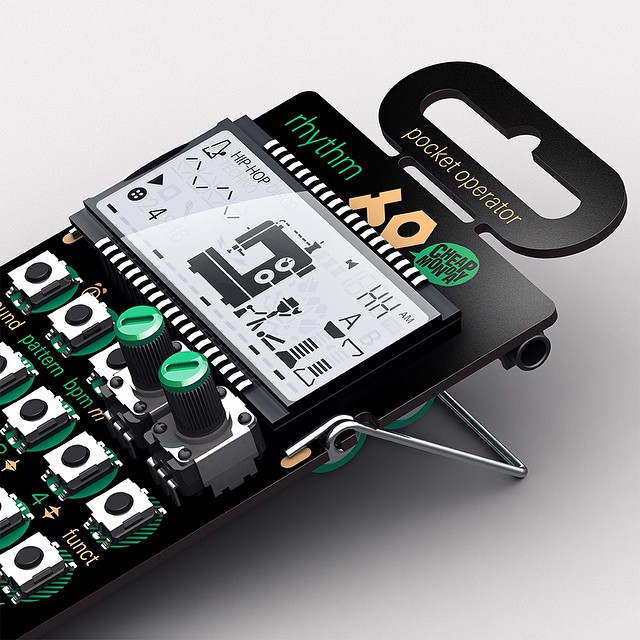Teenage Engineering have also shared with us their video tutorials on the PO (Pocket Operator) line. The basic stuff to know (having been playing around with today rather than doing NAMM work):
This being Nintendo-inspired, yes, there’s a metronome and alarm clock function.
Select one of sixteen patterns, and one of sixteen sounds, with the respective buttons.
Toggle between playing notes with the buttons, or inputing them with the step sequencer, using the “write” button.
Hold “write,” and you can write parameters over top of playing sequences (effects work this way, too). That means you can automate patterns, etc.
“bpm” – several of you asked about this. You can toggle between bpm presets, or dial in specific bpm and swing independently.
For more detail, watch the videos. These really are deceptively powerful, if they require some practice to learn to use. But as a little tiny thing to keep in your studio to generate ideas, well… yep, pretty irresistible.
(These hadn’t been listed yet – I begged for them partly because there were some features that confused me!)
One by one:
And here’s an explanation of how “sync jamming” works:
You’ll find right away that each of these units has multiple personalities inside. So, while you’ll be tempted to get all three, even just one is capable of making a track. There are some synth voices on the rhythm, for instance. There’s a nice percussion kit on the sub.
And yes, I couldn’t resist making some tracks with the rhythm to start things out. Technoooooocrastination! (I’m supposed to be reading through press releases or something…)
Have fun. No edits (apart from one mistake on the first track which required a cut when I bumped “play” – yeah, watch out for that). I added some light plate reverb, which I think is totally fair. And you hear that these really are things you could use in a production.
Some of the “rhythm” sounds are certainly weird – no normal clap, for instance, and a lot of really glitchy digital stuff, though that’s a selling point for some. I will say, some of it sounds fantastic. I think there’s a wider palette of sounds than on the volca beats (twice the price, though that’s still a great buy), and the sound of the unit puts the Akai Rhythm Wolf to shame (at three times the price). Now, sure, those things give you luxuries like MIDI or, I don’t know, a case other than a bare board. But… well, listen.
You know, if a restaurant is good enough, at the right price, you will skip luxuries like walls, a roof, tables, chairs, and … plates. Just stuff it in my mouth, really. And to think, I thought products needed enclosures.
Now, some criticisms, perhaps:
1. Yeah, they’re fragile. I want to try the silicon cases, for sure.
2. Augh, no mute. This one is painful on the rhythm – you can’t easily mute parts, which is part of why my jams get a bit rambly.
3. “fx” is fun on the rhythm, but confusing as hell.
4. You probably won’t spend almost any time looking at the cute animations, to be fair.
5. There’s some mystery here… octopus? Uh, letter? Function? Yes, you’ll get most of what you need to know from the videos, but I expect we’ll have some people posting their own tutorials to make up for the absent documentation.
But… you did work out that there’s a game you can play, too, right?
Oh, Teenage Engineering, we love you.
